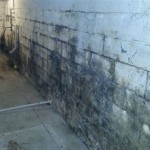Basement Floor Drain P Trap
A basement floor drain P-trap is a plumbing fixture that is installed in the floor of a basement to prevent sewer gases and odors from entering the living space. The P-trap is a U-shaped pipe that holds water, which creates a barrier between the sewer and the living space. When water flows down the drain, it fills the P-trap and creates a seal. This seal prevents sewer gases and odors from escaping into the living space.
Basement floor drain P-traps are typically made of plastic or metal. Plastic P-traps are less expensive than metal P-traps, but they are also more likely to crack or break. Metal P-traps are more durable than plastic P-traps, but they are also more expensive. The type of P-trap that you choose will depend on your budget and your needs.
Basement floor drain P-traps are relatively easy to install. However, it is important to make sure that the P-trap is properly sealed to prevent sewer gases and odors from entering the living space. If you are not comfortable installing a P-trap yourself, you can hire a plumber to do it for you.
In addition to preventing sewer gases and odors from entering the living space, basement floor drain P-traps also help to prevent flooding. If the drain is clogged, the water will back up into the P-trap and create a seal. This seal will prevent the water from overflowing onto the floor.
Basement floor drain P-traps are an important part of any plumbing system. They help to keep sewer gases and odors out of the living space and they also help to prevent flooding. If you are having problems with your basement floor drain, it is important to have it inspected by a plumber to make sure that the P-trap is properly installed and sealed.
How to Clean a Basement Floor Drain P-Trap
Basement floor drain P-traps can become clogged over time, which can lead to water backing up into the drain and flooding. To clean a basement floor drain P-trap, follow these steps:
- Remove the drain cover.
- Use a flashlight to look inside the P-trap. If you see any debris, use a pair of pliers to remove it.
- Pour a cup of white vinegar into the P-trap. This will help to dissolve any remaining debris.
- Let the vinegar sit in the P-trap for 30 minutes.
- Flush the P-trap with hot water.
- Replace the drain cover.
If you are unable to clean the P-trap yourself, you can hire a plumber to do it for you.
How to Replace a Basement Floor Drain P-Trap
If the P-trap is cracked or broken, it will need to be replaced. To replace a basement floor drain P-trap, follow these steps:
- Turn off the water supply to the drain.
- Disconnect the drain pipe from the P-trap.
- Remove the P-trap from the floor.
- Install the new P-trap in the floor.
- Connect the drain pipe to the P-trap.
- Turn on the water supply to the drain.
If you are not comfortable replacing the P-trap yourself, you can hire a plumber to do it for you.

Replacing A Basement Floor Drain And Trap

Plumbing How Can I Prevent Sewer Gas Coming From The Drain Of An Infrequently Used Shower Home Improvement Stack Exchange

How To Clear A Clogged Floor Drain In Denver

Vapour Block Stop Drains From Drying Out

Floor Drain Basics

Floor Drain Basics Homesmsp Real Estate Minneapolis

Installing A New Basement Floor Drain And Underground Drainage Pipes All Steps Concrete Work

Sewer Smell In Basement How To Eliminate Foul Odor

Prime Floor Drain Trap From Standpipe

Why You Should Be Using Oil In Your Floor Drains








